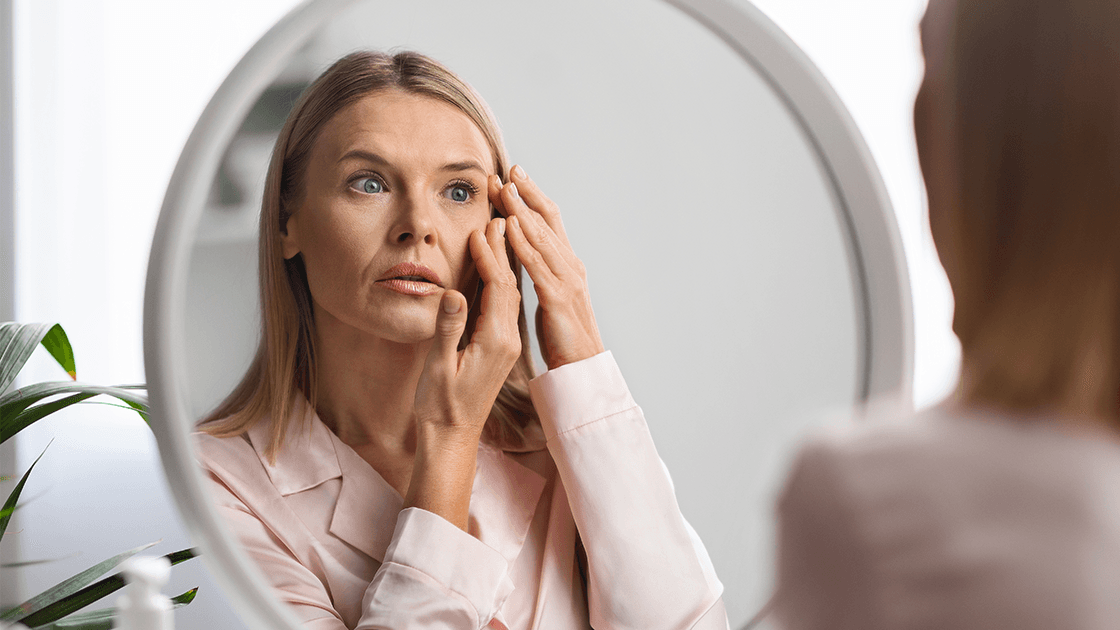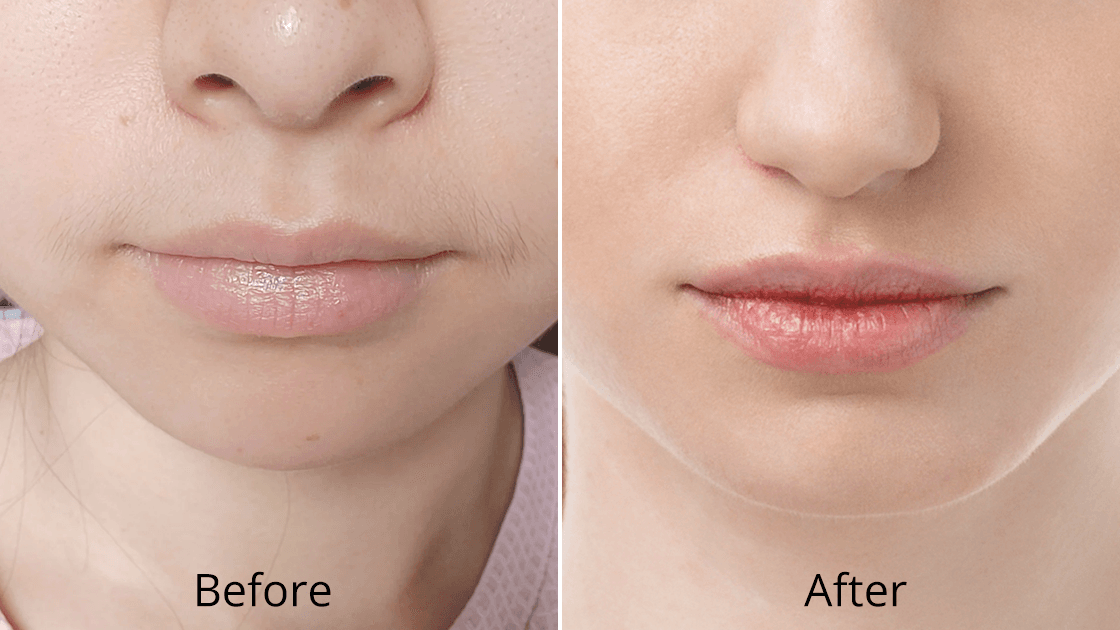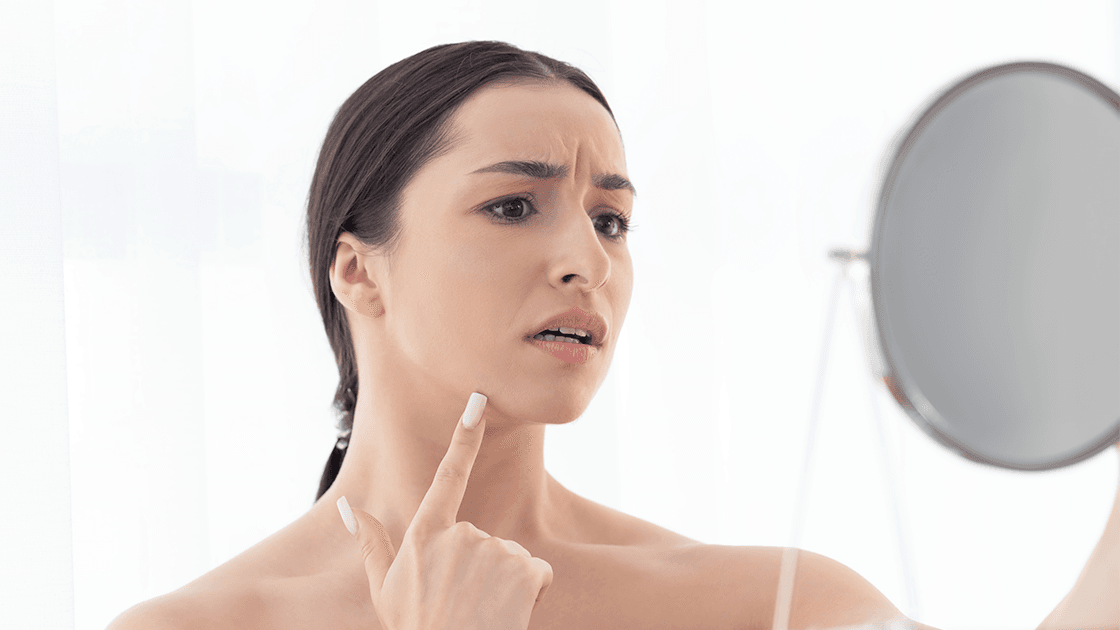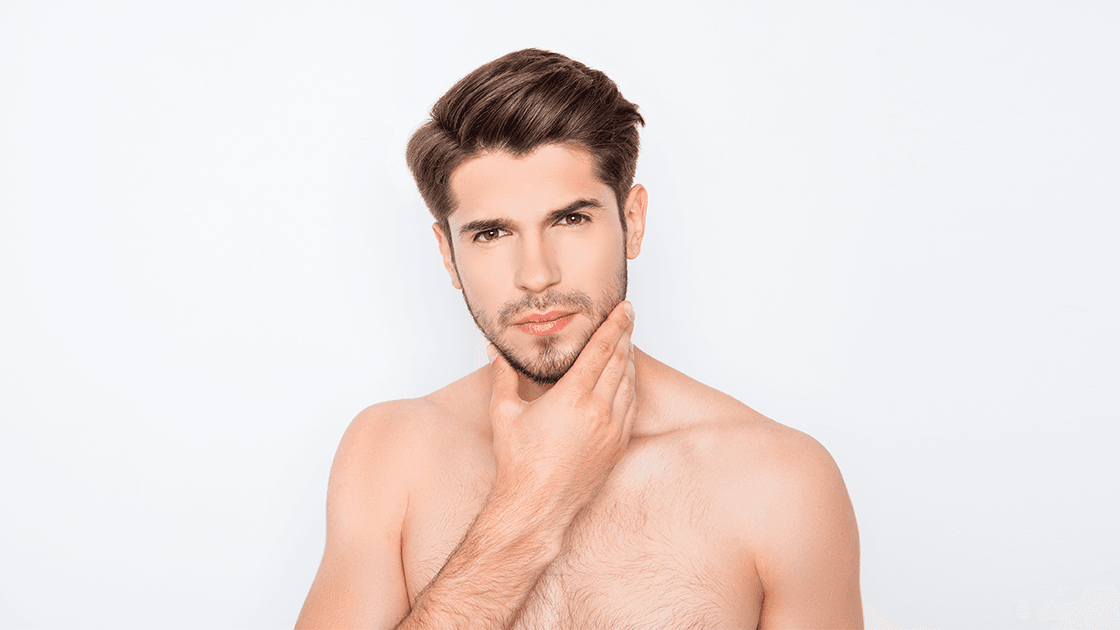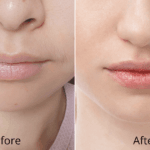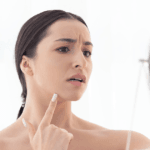1. Introduction: Aging Skin and the Search for Lasting Radiance
The relentless march of time leaves its signature on our skin through a complex interplay of intrinsic and extrinsic aging factors that progressively diminish our natural radiance. As we age, the fundamental architecture of our skin undergoes dramatic changes that manifest as visible signs of aging, creating a cascade of aesthetic concerns that extend far beyond superficial appearance to impact confidence, self-perception, and quality of life. Understanding the underlying mechanisms of skin aging is crucial for appreciating how advanced technologies like pico laser therapy can effectively address these concerns through targeted collagen revival and comprehensive skin rejuvenation strategies.
1.1 The Visible Signs of Aging: Wrinkles, Sagging, and Dullness
The aging process manifests through multiple interconnected pathways that create the characteristic signs we associate with mature skin. Fine lines and wrinkles develop as repetitive facial expressions combined with decreased skin elasticity create permanent creases in areas of high muscular activity. Gravitational forces contribute to skin sagging and jowl formation as supporting structures weaken over time. Loss of cellular turnover leads to accumulation of damaged cells, resulting in dullness, uneven texture, and compromised barrier function. Additionally, cumulative photodamage from ultraviolet radiation accelerates these processes, creating age spots, telangiectasias, and solar elastosis that further contribute to an aged appearance.
1.2 Why Collagen Decline Is the Culprit
Collagen represents the fundamental scaffolding of healthy skin, comprising approximately 75% of skin’s dry weight and providing the structural framework essential for firmness, elasticity, and youthful appearance. Beginning in the mid-twenties, natural collagen production decreases by approximately 1% annually, while existing collagen fibers undergo glycation, cross-linking, and fragmentation that compromises their functional integrity. This progressive collagen degradation is accelerated by matrix metalloproteinases (MMPs), enzymes that break down existing collagen faster than fibroblasts can synthesize new proteins. Environmental factors including UV radiation, pollution, smoking, and oxidative stress further accelerate collagen breakdown while simultaneously impeding new collagen synthesis, creating a compounding effect that manifests as premature aging.
1.3 Enter Pico Laser: The Skin Reviver
Picosecond laser technology represents a revolutionary advancement in aesthetic medicine, offering unprecedented precision and efficacy in stimulating collagen remodeling without the extensive downtime associated with traditional ablative procedures. Unlike conventional laser systems that rely primarily on thermal mechanisms, pico lasers utilize ultra-short pulse durations measured in trillionths of a second to create controlled micro-injuries that trigger natural wound healing responses and collagen regeneration. This innovative approach harnesses the body’s inherent repair mechanisms to restore youthful skin architecture from within, addressing multiple signs of aging simultaneously while maintaining the skin’s natural barrier function and minimizing risk of complications or adverse effects.
2. What Is Pico Laser and How Does It Work?
The revolutionary technology behind pico laser systems represents a paradigm shift in aesthetic laser medicine, utilizing temporal precision measured in picoseconds to deliver therapeutic energy with unprecedented control and efficacy. This advanced approach to skin rejuvenation operates on principles fundamentally different from traditional laser systems, offering unique advantages in treating various skin concerns while minimizing thermal damage and associated downtime.
2.1 Picosecond Explained: Faster Than Traditional Lasers
Picosecond laser technology operates with pulse durations of 10⁻¹² seconds, approximately 100 times faster than traditional nanosecond lasers and 1000 times faster than conventional Q-switched systems. This ultra-short pulse duration prevents significant heat accumulation in target tissues, instead relying on photomechanical effects to create controlled micro-disruptions. The rapid energy delivery exceeds the thermal relaxation time of target chromophores, resulting in photoacoustic rather than photothermal tissue interaction. This mechanism enables precise tissue modification without excessive thermal damage to surrounding structures, allowing for effective treatment of superficial and deep skin concerns while maintaining epidermal integrity and reducing recovery time significantly compared to traditional ablative procedures.
2.2 How Pico Laser Triggers Collagen Remodeling
Pico laser treatment creates controlled micro-injuries that trigger upregulation of matrix metalloproteinases, collagens, heat shock proteins, cytokines and chemokines, reflecting repair mechanisms and tissue remodeling within the dermal matrix. The photomechanical energy creates laser-induced optical breakdown (LIOB) that generates microscopic cavitation bubbles, stimulating fibroblast activation and proliferation. This controlled trauma initiates a cascade of wound healing responses including increased procollagen I and III synthesis, enhanced hyaluronic acid production, and activation of growth factors essential for tissue regeneration. The process occurs without surface ablation, preserving the stratum corneum while targeting deeper dermal structures where collagen synthesis occurs, resulting in natural skin tightening and texture improvement over subsequent weeks to months.
2.3 Targeting the Dermis Without Damaging the Surface
The selective photothermolysis principle underlying pico laser technology enables precise targeting of dermal structures while preserving epidermal integrity through wavelength-specific absorption and ultra-short pulse duration characteristics. The mechanism of tissue breakdown relies on free electrons generated by either thermionic emission or chromophore-independent multiphoton absorption, subsequently creating electron density changes in the focus region. This approach allows penetration depths of 2-4mm into the dermis where collagen synthesis occurs, while the intact epidermis serves as a natural barrier protecting against infection and environmental damage. The fractional delivery pattern creates microscopic treatment zones surrounded by healthy tissue that accelerates healing and minimizes visible signs of treatment.
2.4 Safety, Precision, and Minimal Downtime
Pico laser technology’s ultra-short pulse duration has proven remarkably effective at minimizing thermal damage to surrounding tissue, reducing the risk of complications and promoting faster healing compared to traditional laser systems. The controlled energy delivery minimizes risk of post-inflammatory hyperpigmentation, scarring, or prolonged erythema typically associated with more aggressive treatments. Most patients experience only mild redness and slight swelling for 24-48 hours following treatment, allowing immediate return to daily activities with basic sun protection measures. The precision of pico laser systems enables customized treatment parameters based on individual skin types, concerns, and tolerance levels, ensuring optimal outcomes while maintaining excellent safety profiles across diverse patient populations including those with darker skin types traditionally considered high-risk for laser procedures.
3. The Science Behind Collagen Revival
The molecular and cellular mechanisms underlying pico laser-induced collagen revival represent a sophisticated cascade of biological processes that transform aged, damaged skin into rejuvenated tissue with improved structural integrity and functional capacity. Understanding these scientific principles provides insight into how this advanced technology achieves remarkable aesthetic improvements through harnessing the body’s natural healing and regenerative capabilities.
3.1 The Role of Fibroblasts and Heat Shock Proteins
Fibroblasts serve as the primary cellular architects of dermal regeneration, synthesizing collagen, elastin, and glycosaminoglycans essential for maintaining skin structure and function. Pico laser treatment upregulates heat shock proteins and various inflammatory cytokines including procollagens, interleukin-1β, and tumor necrosis factor-α that orchestrate the tissue remodeling process. Heat shock proteins (HSP), particularly HSP47 and HSP70, function as molecular chaperones that assist in proper collagen folding, assembly, and transport within fibroblasts. These proteins ensure newly synthesized collagen achieves correct tertiary structure and stability, preventing malformed proteins that could compromise tissue integrity. The controlled thermal stress from pico laser treatment upregulates these protective proteins, enhancing the quality and quantity of new collagen production while protecting existing structural elements.
3.2 Micro-injury, Macro Benefit: Controlled Laser Damage
The concept of controlled micro-injury forms the foundation of pico laser’s therapeutic efficacy, creating precisely calibrated tissue disruption that stimulates regenerative responses without causing excessive damage or prolonged healing times. Electron microscopy reveals disarranged collagen bundles with microspaces and vascular leakage in the upper dermis following treatment, indicating controlled dermal remodeling. These microscopic zones of laser-induced optical breakdown trigger immediate cellular responses including complement activation, cytokine release, and growth factor mobilization. The spatial pattern of micro-injuries creates a scaffold for new tissue formation while preserving sufficient healthy tissue between treatment zones to facilitate rapid healing. This approach maximizes therapeutic benefit while minimizing adverse effects, allowing patients to achieve significant improvements without the extended recovery periods associated with more aggressive interventions.
3.3 Skin Healing and Remodeling Phases
The wound healing cascade initiated by pico laser treatment follows distinct temporal phases that collectively result in improved skin quality and appearance over time.
The immediate inflammatory phase (0-72 hours) involves vasodilation, immune cell infiltration, and debris clearance from laser-induced micro-injuries.
The proliferative phase (3-21 days) features fibroblast activation, angiogenesis, and initiation of new collagen synthesis as cellular repair mechanisms respond to the controlled trauma. Levels of collagen synthesis markers show enhancement during this period, indicating active tissue regeneration.
The remodeling phase (3-12 months) involves collagen maturation, cross-linking, and reorganization that gradually improves skin texture, firmness, and overall appearance. Understanding these temporal relationships helps set appropriate patient expectations and optimize treatment timing for maximum benefit.
3.4 Long-Term Collagen Rebuilding and Skin Strengthening
The sustained collagen enhancement achieved through pico laser treatment extends far beyond the immediate post-treatment period, creating cumulative improvements that continue developing over subsequent months. New collagen fibers undergo extensive cross-linking and maturation processes that increase tensile strength and elasticity compared to aged, glycated collagen present in untreated skin. Pico laser stimulates collagen to make skin denser and thicker over time, resulting in improved structural support and resistance to future aging processes. The enhanced collagen network better supports dermal-epidermal junction integrity, improves microcirculation, and creates a more resilient foundation for long-term skin health. Regular maintenance treatments can sustain and enhance these benefits, effectively slowing the aging process and preserving youthful skin characteristics for extended periods.

4. Pico Laser for Wrinkles and Fine Lines
The application of pico laser technology for treating wrinkles and fine lines represents one of the most significant advances in non-invasive facial rejuvenation, offering patients effective solutions for addressing various types of rhytides without the risks and extended downtime associated with surgical procedures or highly aggressive laser treatments.
4.1 Smoothing Crow’s Feet, Forehead Lines, and Laugh Lines
Dynamic wrinkles formed by repetitive muscle contractions respond exceptionally well to pico laser treatment through stimulation of dermal collagen synthesis and improvement of skin elasticity in areas of high muscular activity. Crow’s feet, the radiating lines extending from the lateral canthal regions, benefit from improved dermal thickness and enhanced collagen organization that provides better structural support against repetitive orbicularis oculi contractions. Forehead lines, whether horizontal rhytides from frontalis muscle activity or vertical glabellar lines from corrugator and procerus muscles, show significant improvement as increased collagen density provides enhanced resistance to folding and creasing. The production of new collagen leads to reduction in the appearance of fine lines and wrinkles, promoting a smoother complexion. Nasolabial folds and marionette lines also respond favorably to the tissue tightening effects achieved through controlled collagen remodeling.
4.2 Comparing Pico to Fractional and CO₂ Lasers
Pico laser technology offers distinct advantages over traditional fractional and CO₂ laser systems in terms of safety profile, downtime requirements, and versatility across different skin types. Unlike CO₂ lasers that create significant thermal damage requiring weeks of healing and carrying risks of scarring or pigmentation changes, pico lasers achieve comparable anti-aging results through photomechanical rather than thermal mechanisms. Fractional picosecond laser has positive effects on facial photoaging, enlarged pores, dyspigmentation, wrinkles, and atrophic scars while maintaining excellent safety profiles. Fractional non-ablative lasers provide moderate improvements with minimal downtime but often require more treatments to achieve comparable results. Pico lasers combine the efficacy approaching that of ablative systems with the convenience and safety of non-ablative treatments, making them ideal for patients seeking significant improvements without extended recovery periods.
4.3 Skin Types and Areas Best Treated
Pico laser systems demonstrate exceptional versatility across diverse skin types and anatomical regions, with particular efficacy in treating delicate areas where traditional lasers might pose higher risks of adverse effects. Fitzpatrick skin types I-IV generally respond excellently to pico laser treatment, while types V-VI require careful parameter selection and conservative approaches to minimize risk of post-inflammatory hyperpigmentation. The periorbital region, including upper and lower eyelids, responds particularly well due to the thin skin and minimal subcutaneous tissue that allows effective energy penetration. The neck and décolletage areas, often exhibiting significant photodamage and crepey texture, benefit from improved collagen organization and thickness. Facial areas with mixed skin concerns including wrinkles, pigmentation, and texture irregularities can be comprehensively addressed in single treatment sessions.
4.4 When Will You See Results? Pico Laser Before & After Timeline
Visible improvements start to emerge 2-3 weeks post treatment, with ongoing enhancements as the skin heals and collagen remodeling progresses through its natural phases. Initial improvements in skin texture and radiance may be apparent within the first week as mild inflammation subsides and cellular turnover increases. Significant wrinkle reduction and skin tightening become evident at 4-6 weeks as new collagen synthesis reaches peak levels and tissue reorganization occurs. Optimal results typically manifest 3-4 months post-treatment when collagen maturation and cross-linking create maximum structural improvements. Multiple treatment sessions spaced 4-6 weeks apart often provide cumulative benefits that exceed single treatment outcomes. Maintenance treatments every 6-12 months can sustain and enhance initial results, creating long-term anti-aging benefits that effectively slow the natural aging process.
5. More Than Just Wrinkle Treatment
While pico laser technology excels at addressing wrinkles and fine lines, its therapeutic applications extend far beyond anti-aging concerns to encompass a comprehensive range of skin conditions that collectively contribute to overall skin quality and aesthetic appearance. This versatility makes pico laser an invaluable tool for achieving complete skin transformation rather than targeting isolated concerns.
5.1 Fading Sun Spots and Pigmented Lesions
The exceptional efficacy of pico laser technology in treating pigmented lesions stems from its ability to fragment melanin particles into smaller components that are more readily eliminated by the lymphatic system. Clinical studies on Asian patients show the majority achieved at least 60% and 90% pigment clearance after two and three sessions respectively for various pigmented lesions. Solar lentigines, café-au-lait macules, melasma, and post-inflammatory hyperpigmentation respond favorably to the photomechanical disruption of melanosomes without significant thermal damage to surrounding tissues. The wavelength versatility of modern pico laser systems allows targeting of different pigment depths and types, from superficial epidermal melanin to deeper dermal pigmentation. Treatment of melasma, traditionally challenging due to its mixed epidermal-dermal distribution and tendency toward recurrence, shows improved outcomes with pico laser therapy compared to conventional treatments.
5.2 Minimizing Pore Size and Evening Skin Tone
Pico laser treatments help refine skin texture by minimizing the appearance of pores and enhancing overall smoothness through multiple complementary mechanisms that address both structural and functional aspects of pore visibility. The collagen stimulation effects create dermal thickening that provides better structural support around follicular openings, reducing their apparent size and depth. Improved skin texture from enhanced cellular turnover helps create more uniform light reflection across the skin surface, minimizing shadows that accentuate pore visibility. Additionally, the reduction in sebaceous gland activity and improved follicular drainage can decrease pore congestion and subsequent enlargement. The overall improvement in skin quality, including enhanced hydration and barrier function, contributes to more even skin tone and reduced appearance of surface irregularities that collectively create a more refined, youthful appearance.
5.3 Acne Scars and Texture Refinement
Acne scarring represents one of the most challenging aesthetic concerns, but pico laser technology offers effective solutions for various scar morphologies through targeted collagen remodeling and tissue regeneration. Atrophic scars including ice pick, boxcar, and rolling scars benefit from the controlled micro-injury that stimulates new collagen formation and tissue remodeling in depressed areas. The fractional delivery pattern creates microscopic treatment zones that initiate healing responses while preserving surrounding healthy tissue for faster recovery. Hypertrophic scars and keloids may also respond to pico laser treatment through modulation of excessive collagen production and inflammatory responses. The combination of collagen stimulation for atrophic scars and collagen remodeling for hypertrophic scars makes pico laser technology particularly valuable for patients with mixed scar types requiring comprehensive treatment approaches.
5.4 Preventative Treatment for Younger Skin
The concept of preventative aesthetic medicine has gained significant attention as patients increasingly seek to maintain youthful appearance rather than simply correct existing signs of aging. Pico laser technology offers ideal characteristics for preventative applications in younger patients showing early signs of photoaging or those with genetic predispositions to premature aging. Pico lasers can stimulate collagen production, helping maintain skin thickness and elasticity before significant deterioration occurs. Regular preventative treatments can help preserve existing collagen while stimulating ongoing synthesis to counteract natural age-related decline. The minimal downtime and excellent safety profile make pico laser suitable for maintenance treatments that fit easily into busy lifestyles. Younger patients often respond more readily to collagen stimulation treatments, achieving superior results with fewer sessions compared to more mature skin requiring corrective rather than preventative approaches.
6. What to Expect During and After Pico Laser Treatment
Understanding the complete treatment experience from preparation through recovery helps patients make informed decisions and optimize their outcomes while minimizing potential complications or dissatisfaction. Proper preparation and post-treatment care are essential components of successful pico laser therapy that significantly influence both safety and efficacy.
6.1 Preparing Your Skin for Treatment
Optimal preparation begins 2-4 weeks before treatment with establishment of a proper skincare routine that enhances skin barrier function and minimizes risk of adverse reactions. Patients should discontinue photosensitizing medications, retinoids, and exfoliating agents 7-14 days prior to treatment depending on product strength and skin sensitivity. Sun avoidance and consistent broad-spectrum sunscreen use are essential to minimize baseline inflammation and reduce risk of post-inflammatory hyperpigmentation. Hydrating skincare products containing hyaluronic acid, ceramides, or niacinamide can improve skin barrier function and treatment tolerance. Patients with history of herpes simplex should initiate antiviral prophylaxis 2-3 days before treatment. Pre-treatment photography and comprehensive skin assessment help establish baseline conditions and treatment goals while identifying any contraindications or areas requiring special attention.
6.2 What the Session Feels Like
Most patients describe pico laser treatment sensations as tolerable discomfort similar to rubber band snaps or brief stinging sensations that occur with each laser pulse. The ultra-short pulse duration minimizes heat accumulation and associated burning sensations compared to traditional laser treatments. Topical anesthetic creams applied 30-60 minutes before treatment can significantly reduce discomfort for sensitive patients or when treating larger areas. Treatment duration varies from 15-45 minutes depending on area size and condition complexity. The fractional delivery pattern creates intermittent sensations rather than continuous discomfort, allowing patients to tolerate treatments without significant distress. Cool air or contact cooling systems further enhance comfort during treatment. Most patients find the discomfort completely manageable and are surprised by how tolerable the experience proves compared to their expectations or previous laser treatments.
6.3 Post-Treatment Sensations and Care
Immediate post-treatment effects typically include mild erythema, slight swelling, and possible pinpoint bleeding at treatment sites that resolve within 24-48 hours with proper care. Patients may experience mild burning or stinging sensations for 2-4 hours following treatment, similar to mild sunburn symptoms. Cool compresses, gentle cleansing with mild surfactant-free cleansers, and application of healing ointments or serums help minimize discomfort and support optimal healing. Avoiding harsh products, excessive heat, and mechanical trauma to treated areas prevents complications and enhances outcomes. Proper hydration through increased water intake and topical moisturizers supports cellular repair processes. Some patients experience temporary darkening of pigmented lesions before they naturally exfoliate, which is a normal part of the healing process that should not cause alarm.
6.4 Downtime, Peeling, and Makeup Use
The minimal downtime associated with pico laser treatment represents one of its most significant advantages, allowing most patients to return to normal activities immediately following treatment with basic precautions. Mild peeling may occur 3-7 days post-treatment as enhanced cellular turnover removes damaged surface cells, revealing healthier skin underneath. This peeling is typically subtle and can be managed with gentle exfoliation and enhanced moisturization. Makeup application is generally permitted 24 hours post-treatment once any pinpoint bleeding has resolved, though mineral-based formulations are preferable during initial healing phases. Sun protection is absolutely essential during the healing period and should include broad-spectrum SPF 30 or higher sunscreens reapplied every 2 hours during sun exposure. Exercise and activities causing excessive sweating should be avoided for 24-48 hours to prevent infection or irritation of treatment sites.
7. Who’s the Ideal Candidate for Pico Laser?
Successful pico laser outcomes depend significantly on appropriate candidate selection, considering factors including skin type, age, medical history, expectations, and specific aesthetic concerns. Understanding ideal candidacy criteria helps ensure patient satisfaction while minimizing risk of complications or suboptimal results.
7.1 Fitzpatrick Skin Types and Ethnic Considerations
Types I–III (Fair to Medium Skin):
Respond very well to treatment
Low risk of pigmentation issues
Can tolerate higher energy settings for optimal results
Types IV–V (Olive to Brown Skin):
Require reduced energy settings
Careful monitoring needed to avoid post-inflammatory hyperpigmentation (PIH)
Still maintain high treatment efficacy
Type VI (Very Dark Skin):
Safe when using specialized protocols and conservative parameters
Longer intervals between sessions recommended
Historically considered high-risk, but pico’s lower thermal damage increases safety

7.2 Best Age to Start Laser Collagen Therapy
The optimal age for initiating pico laser collagen therapy varies based on individual factors including genetics, lifestyle, sun exposure history, and personal aesthetic goals rather than chronological age alone. Patients in their late twenties to early thirties showing early signs of photoaging or genetic predisposition to premature aging may benefit from preventative treatments that maintain existing collagen while stimulating ongoing synthesis. Those in their forties typically seek correction of established signs of aging including wrinkles, pigmentation, and texture changes where pico laser provides excellent results. Older patients can achieve significant improvements though may require more treatments or combination approaches for optimal outcomes. The key consideration is realistic expectations aligned with skin condition and treatment capabilities rather than specific age parameters.
7.3 Contraindications and Caution Zones
Absolute contraindications include pregnancy, active infections in treatment areas, immunosuppressive conditions, and certain photosensitizing medications that cannot be temporarily discontinued. Relative contraindications requiring careful evaluation include recent isotretinoin use (within 6-12 months), active autoimmune conditions, keloid formation tendency, and unrealistic expectations. Patients with metallic implants near treatment areas, pacemakers, or other electronic devices require careful evaluation and possible device deactivation during treatment. Recent cosmetic procedures including chemical peels, laser treatments, or injectable treatments may necessitate treatment delays to ensure proper healing and minimize complications. History of melasma or post-inflammatory hyperpigmentation requires conservative treatment approaches with extensive pre- and post-treatment care protocols to minimize risk of pigmentation recurrence or worsening.
8. Pico Laser vs. Other Anti-Aging Treatments
The landscape of aesthetic medicine offers numerous treatment options for addressing signs of aging, each with distinct mechanisms, advantages, limitations, and optimal applications. Comparing pico laser technology with alternative approaches helps patients and practitioners make informed decisions about treatment selection and combination strategies for optimal outcomes.
8.1 How Pico Compares to RF Treatment
Radiofrequency (RF) treatments utilize electromagnetic energy to heat dermal tissues and stimulate collagen contraction and neogenesis through thermal mechanisms, while pico lasers achieve similar outcomes through photomechanical tissue disruption without significant heat accumulation. RF treatments excel at skin tightening and body contouring applications, providing immediate tissue contraction effects that complement the gradual collagen building achieved with pico laser therapy. The combination of RF and pico laser technologies can provide synergistic benefits, with RF addressing laxity through immediate tightening while pico laser enhances long-term collagen quality and skin texture. RF treatments typically require minimal downtime but may need more frequent maintenance sessions, while pico laser provides longer-lasting results with comparable convenience. Patient comfort varies between modalities, with some preferring the brief discomfort of pico laser pulses versus the sustained heating sensation of RF treatments.
8.2 Fillers, Botox, and Lasers: What’s the Combo Plan?
The integration of pico laser therapy with neurotoxins and dermal fillers creates comprehensive anti-aging strategies that address multiple aspects of facial aging through complementary mechanisms and timeframes. Botulinum toxin injections prevent dynamic wrinkle formation through muscle relaxation, while pico laser improves skin quality and static rhytides through collagen enhancement. This combination provides both prevention and correction of wrinkle formation. Dermal fillers restore volume loss and structural support, while pico laser improves skin texture and quality, creating natural-appearing results superior to either treatment alone. Treatment sequencing typically involves botulinum toxin first, followed by fillers, then pico laser therapy to avoid interference with injection accuracy. The enhanced collagen production from pico laser treatment may extend filler longevity by providing improved structural support for injected materials.
8.3 Combining Pico with Skincare for Optimal Results
The synergistic relationship between professional pico laser treatments and medical-grade skincare products significantly enhances treatment outcomes while extending result longevity through ongoing skin health maintenance. Pre-treatment conditioning with retinoids, antioxidants, and barrier repair products improves treatment tolerance and results. Post-treatment skincare including growth factors, peptides, and hydrating formulations supports healing and collagen synthesis. Ongoing maintenance with vitamin C serums, retinoids, and broad-spectrum sunscreens protects treatment investments while providing continued skin improvement between sessions. Professional-grade chemical peels can complement pico laser treatments by enhancing cellular turnover and product penetration. The combination approach addressing both structural improvement through laser treatment and ongoing maintenance through quality skincare creates optimal long-term anti-aging outcomes.
9. Conclusion: Why Collagen Revival Is the Key to Ageless Skin
Collagen is essential for youthful, firm, and radiant skin. Terapia laser Pico offers a scientifically backed, non-invasive solution to revive collagen by stimulating natural regeneration deep within the dermis. Unlike surface-level creams or invasive procedures, pico lasers use photomechanical energy to trigger fibroblast activation, increase collagen synthesis, and remodel skin—all with minimal downtime. Clinical studies show significant improvements in wrinkles, elasticity, texture, and pigmentation. This multi-benefit approach treats not only fine lines but also pore size, acne scars, and uneven tone, making it a comprehensive anti-aging solution. With excellent safety across skin types and no thermal damage, pico laser balances efficacy with minimal risk, offering lasting results with little lifestyle disruption. As technology evolves, it stands out as the gold standard in non-invasive collagen rejuvenation—ideal for those seeking natural, radiant, age-defying skin.
10. FAQs About Pico Laser for Wrinkle and Collagen Revival
Most patients achieve significant improvement with 3-6 treatment sessions spaced 4-6 weeks apart, though individual needs vary based on skin condition, age, and treatment goals. Maintenance treatments every 6-12 months help sustain results.
Yes, pico laser therapy combines excellently with botulinum toxin, dermal fillers, and radiofrequency treatments. Proper sequencing and timing ensure optimal safety and synergistic results.
Pico laser technology is generally safe across all Fitzpatrick skin types, though darker skin requires conservative treatment parameters and specialized protocols to minimize risk of pigmentation changes.
Makeup can typically be applied 24 hours post-treatment once any pinpoint bleeding has resolved. Mineral-based formulations are preferable during initial healing phases.
Yes, pico laser is highly effective for treating various types of acne scars through collagen stimulation and tissue remodeling that improves scar depth and texture over time.
11. Referências
- O laser Pico é o segredo para uma textura de pele mais suave
- Pico Laser Aftercare: The 72-Hour Rule for Optimal Results
- Atualização do tratamento com laser fraccionado de picossegundos: histologia e aplicações clínicas
- Evaluation of the Efficacy of the 755 nm Picosecond Laser in Eliminating Pigmented Skin Lesions after a Single Treatment Based on Photographic Analysis with Polarised Light
- Rejuvenescimento da pele
